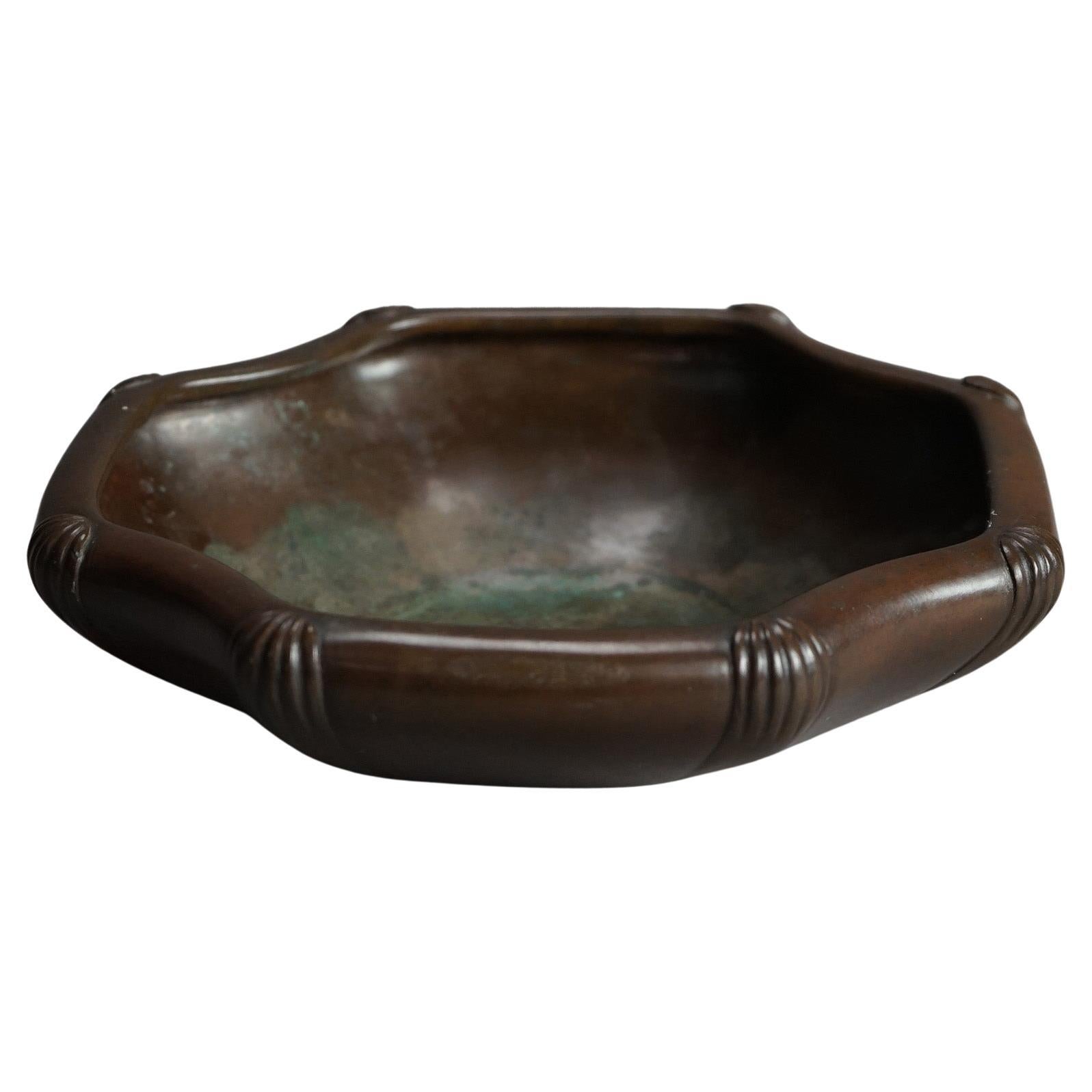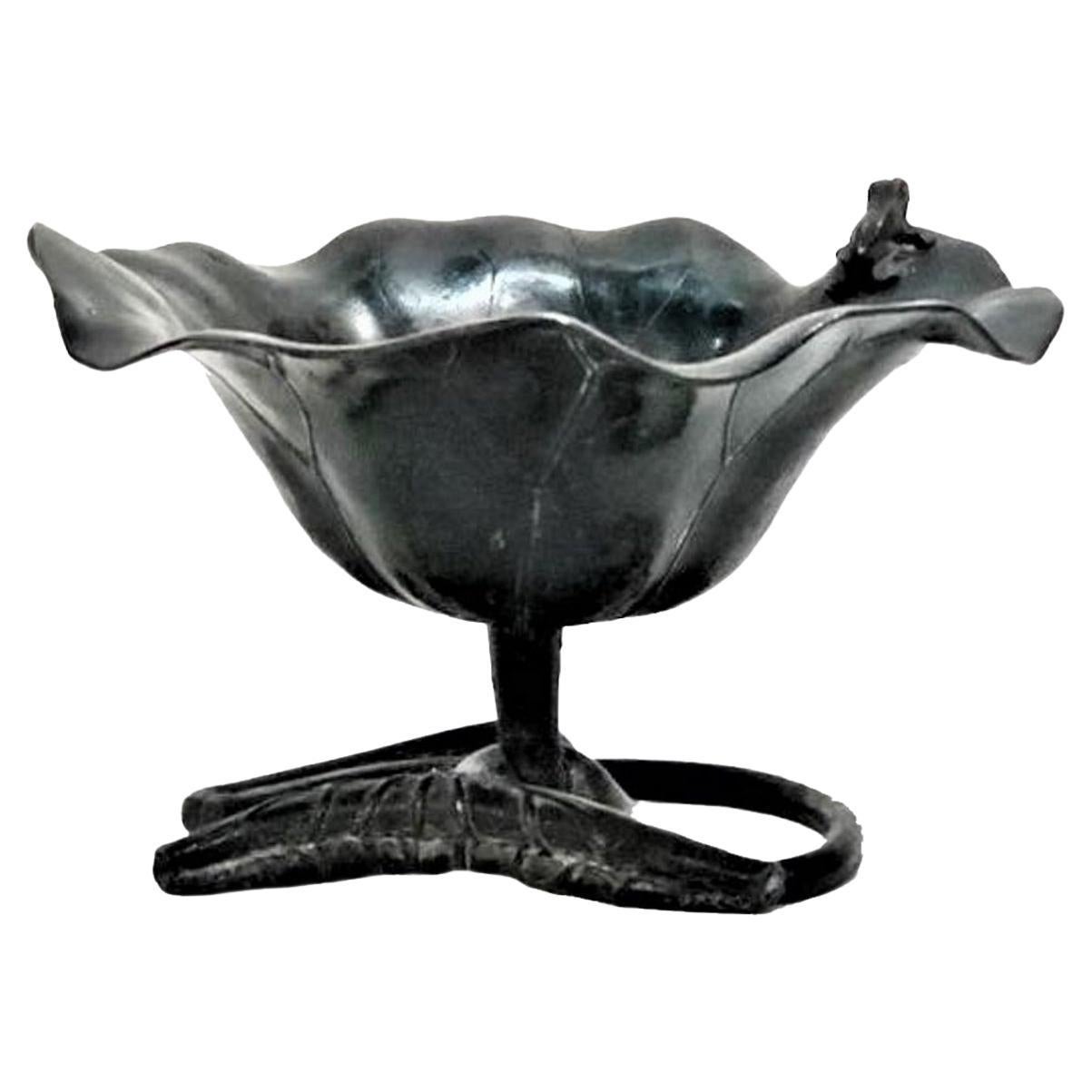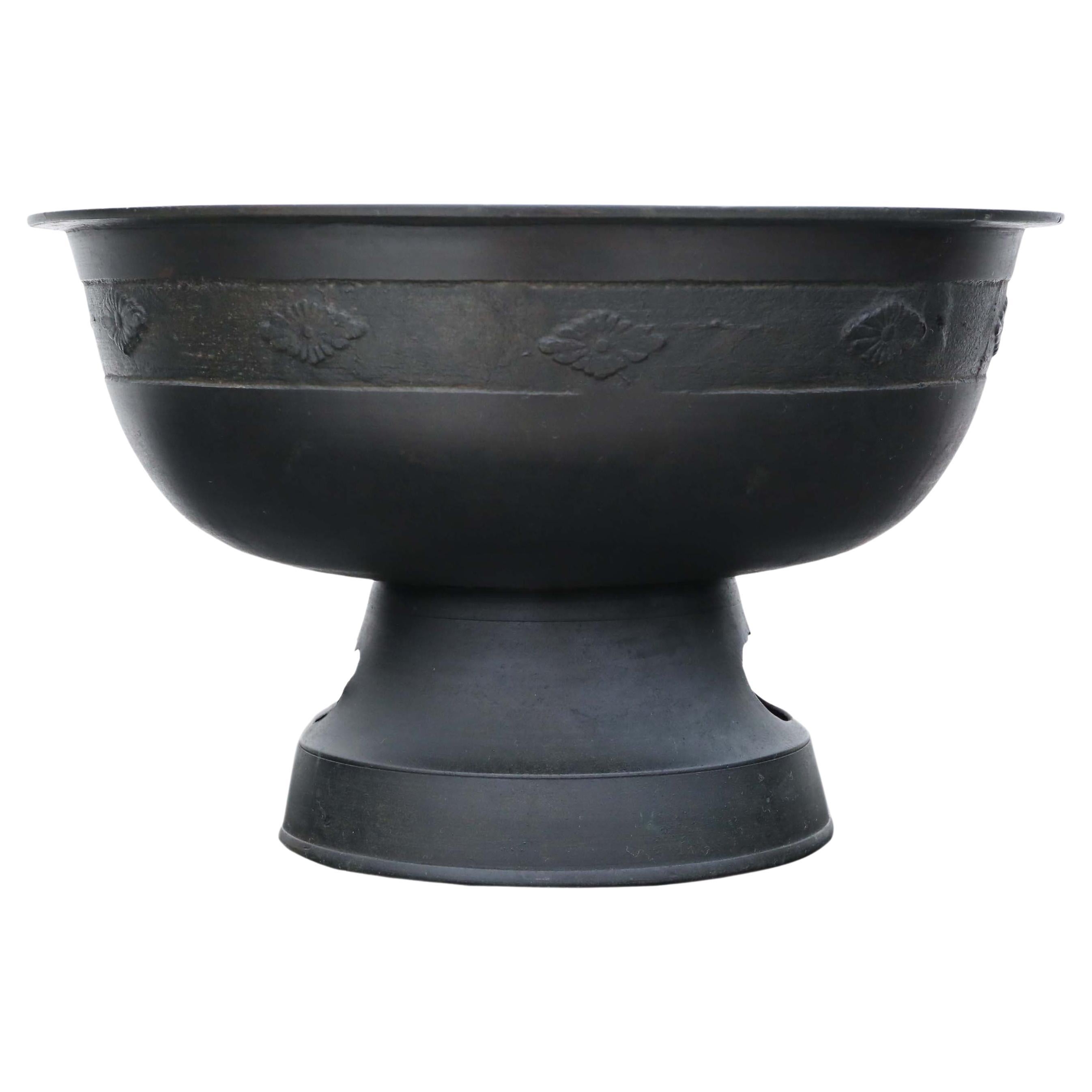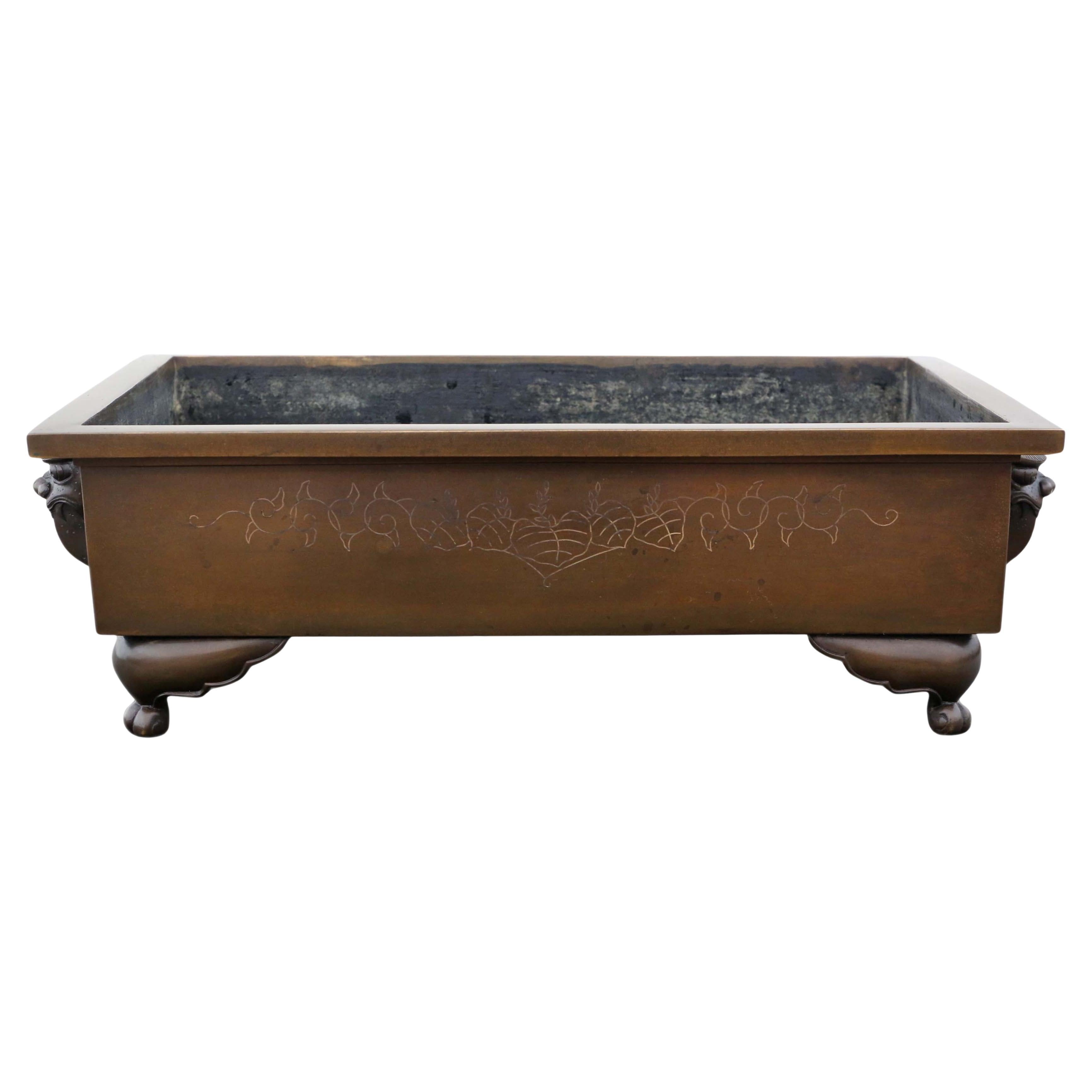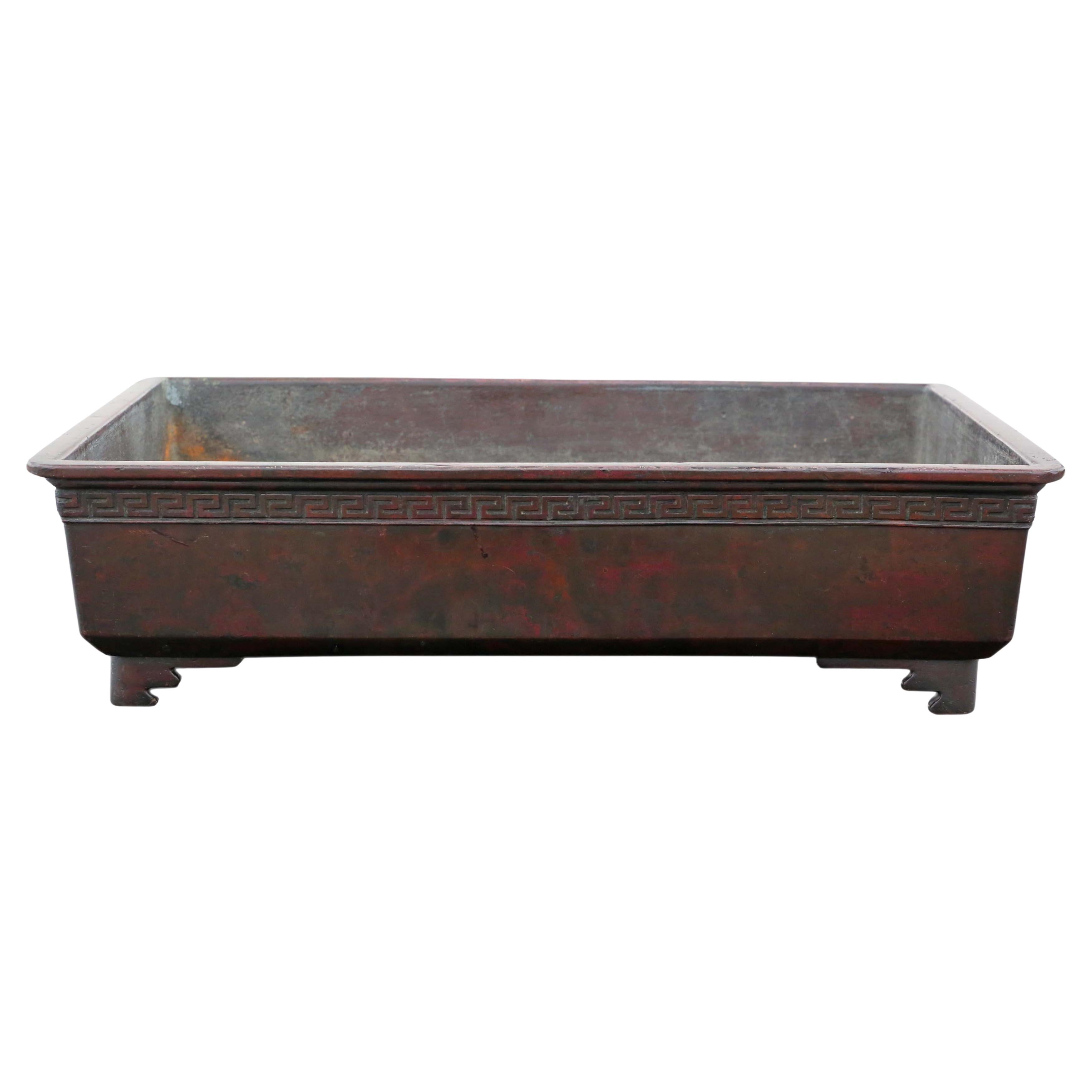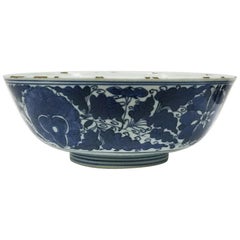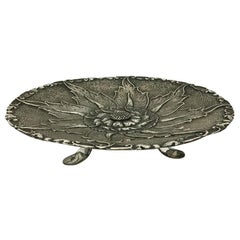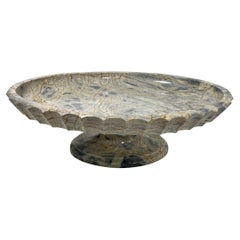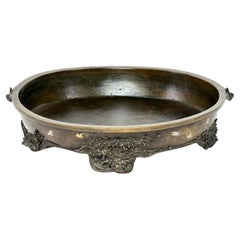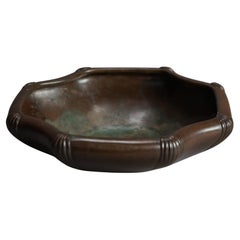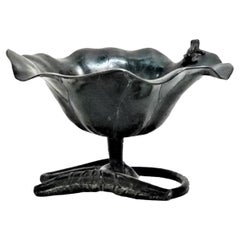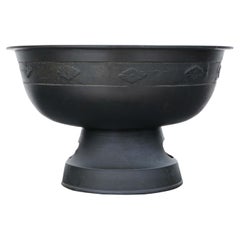Items Similar to Japanese Bronze Ikebana Lotus Footed Bowl
Video Loading
Want more images or videos?
Request additional images or videos from the seller
1 of 8
Japanese Bronze Ikebana Lotus Footed Bowl
$2,695.82
£2,006.87
€2,250
CA$3,692.60
A$4,106.98
CHF 2,144.54
MX$49,977.59
NOK 27,389.02
SEK 25,686.07
DKK 17,128.46
Shipping
Retrieving quote...The 1stDibs Promise:
Authenticity Guarantee,
Money-Back Guarantee,
24-Hour Cancellation
About the Item
Japanese bronze Ikebana Lotus footed bowl
A Japanese Meiji Period (1868-1912) footed bowl in the shape of a leaf with Lotus flowers raided on three legs.
Ca. 1900. The bowl is 12 cm high and 25 cm diagonal. The weight is 1685 grams
The origin of ikebana lies in the ritual flower offerings to the spirits of the deceased in Buddhist temples. These offerings date back to the 6th century when Buddhism was introduced to Japan. Buddhism originally came from India and reached Japan through China.
From the 10th century onward, in Japan, containers were used to place the flowers. With the flower arrangements offered, both the flowers and the branches were made to point towards the sky, as a sign of faith. The first to practice ikebana were priests.
- Dimensions:Height: 4.73 in (12 cm)Diameter: 9.85 in (25 cm)
- Materials and Techniques:
- Place of Origin:
- Period:
- Date of Manufacture:circa 1900
- Condition:
- Seller Location:Delft, NL
- Reference Number:Seller: M11851stDibs: LU3465128645112
About the Seller
5.0
Platinum Seller
Premium sellers with a 4.7+ rating and 24-hour response times
Established in 1995
1stDibs seller since 2018
374 sales on 1stDibs
Typical response time: 1 hour
- ShippingRetrieving quote...Shipping from: Delft, Netherlands
- Return Policy
Authenticity Guarantee
In the unlikely event there’s an issue with an item’s authenticity, contact us within 1 year for a full refund. DetailsMoney-Back Guarantee
If your item is not as described, is damaged in transit, or does not arrive, contact us within 7 days for a full refund. Details24-Hour Cancellation
You have a 24-hour grace period in which to reconsider your purchase, with no questions asked.Vetted Professional Sellers
Our world-class sellers must adhere to strict standards for service and quality, maintaining the integrity of our listings.Price-Match Guarantee
If you find that a seller listed the same item for a lower price elsewhere, we’ll match it.Trusted Global Delivery
Our best-in-class carrier network provides specialized shipping options worldwide, including custom delivery.More From This Seller
View AllAustrian Bronze Shaped Bowl by Hertha Ballers for Walter Bosse, 1950s
By Walter Bosse, Herta Baller
Located in Delft, NL
Austrian Bronze Shaped Bowl by Hertha Ballers for Walter Bosse, 1950s
A bronze bowl signed by Hertha Ballers in small organic shaped form.
Designed by Walter Bosse 1950s, Austria
Th...
Category
Mid-20th Century Austrian Decorative Bowls
Materials
Brass
Chinese Kangxi Blue and White Porcelain Bowl Decorated with Lotus Vines
Located in Delft, NL
A Chinese Kangxi blue and white porcelain bowl decorated with lotus vines
Kangxi (1662-1722)
The lotus vines painted between two blue ...
Category
Antique 17th Century Chinese Ceramics
Materials
Porcelain
Indonesian Silver Djokja/ Yogya 3-Legged Dish with Floral Pattern
Located in Delft, NL
Indonesian silver Yogya 3-legged dish with floral pattern
Marked with S800
On the edge a small scene of leaves and in the middle a flower in relief
partly hammered raised on smooth 3 legs under the base
Yogya is known that the silver may not be polished completely.
The depth in the reliefs of Yogya is black, so it has a beautiful effect
The measurements are 4.5 cm high and 20.5 cm diagonal
The weight in total is 303 gram
The manufacture of silverware known as Yogya silver...
Category
Early 20th Century Indonesian Serving Pieces
Materials
Silver
19th Century Marble Oval Tazza Centerpiece Bowl
Located in Delft, NL
19th Century marble oval Tazza centerpiece bowl
A beautifully marbled bowl on foot with a scalloped outer rim. The lines of the marble from beige to da...
Category
Antique 19th Century European Decorative Bowls
Materials
Marble
Jan de Rooden Small Stoneware Bowl, the Netherlands
Located in Delft, NL
Jan de Rooden small stoneware bowl
Jan de Rooden, J.W.M , Dutch ceramist
Born in Nijmegen 1931- died in Amsterdam 2016, the Netherlands
A salt gla...
Category
20th Century Dutch Ceramics
Materials
Stoneware
Johnny Rolf Dutch Ceramist, Small Stoneware Bowl
Located in Delft, NL
Johnny Rolf (1936-) Dutch ceramist, small stoneware bowl
Johnny Rolf was born in 1936 in The Hague (The Netherlands).
She met her partner Jan de Rooden...
Category
Late 20th Century Dutch Pottery
Materials
Stoneware
You May Also Like
Japanese Meiji Period Bronze Suiban Ikebana Planter Bowl with Inlay
Located in San Francisco, CA
This large fine quality bronze bowl planter, known as a Suiban Ikebana, dates to the Meiji period (late 19th to early 20th century) and is perfect for flower arrangements or bonsai a...
Category
Antique Late 19th Century Japanese Meiji Metalwork
Materials
Gold, Silver, Bronze
Antique Chinese Bronze Low Bowl, Signed, Circa 1900
Located in Big Flats, NY
An antique Chinese low bowl offers bronze construction with stylized corner elements, signed on base as photographed, c1900
Measures - 2"h x 8" x 8"
Category
Early 20th Century Asian Metalwork
Materials
Bronze
$600 Sale Price
20% Off
Japanese Meiji Era Bronze Lotus Leaf Bowl, Vide Poche, ca. 1900
Located in New York, NY
DIMENSIONS: Height: 4 inches Width: 6 inches Depth: 6 inches
ABOUT THE OBJECT
With the laconic Japanese-style Art Nouveau design, filled with symbolism and metaphorism, this multi-use bowl...
Category
Antique Early 1900s Japanese Art Nouveau Vases
Materials
Bronze
Antique Oriental Japanese Large Fine Quality Bronze Bowl Planter Jardinière
Located in Wisbech, Cambridgeshire
Antique Oriental Japanese large fine quality bronze Buddhist Tearai basin for water libation in a temple. Dates from the late Edo Period, mid 19th Century and is well suited for use ...
Category
Antique Mid-19th Century Japanese Metalwork
Materials
Bronze
$1,721 Sale Price
30% Off
Antique Oriental Japanese Large Fine Quality Bronze Bowl Planter Jardinière
Located in Wisbech, Cambridgeshire
Antique Vintage Oriental Japanese Heavy Bronze Bowl Planter/Jardinière, circa 1930 – a fine-quality piece from the Taisho and Early Showa Period, ideal for Suiban Ikebana art. Perfect for flower arrangements or bonsai displays...
Category
20th Century Metalwork
Materials
Bronze
$2,872 Sale Price
30% Off
Antique Late Edo C1850 Japanese Bronze Suiban Ikebana Bowl Planter Jardinière
Located in Wisbech, Cambridgeshire
Antique Late Edo Period Japanese Bronze Suiban Ikebana Bowl Planter (C1850)
This large, fine quality bronze bowl planter, known as a Suiban Ikebana, dates back to the late Edo perio...
Category
Antique 19th Century Metalwork
Materials
Bronze
$2,872 Sale Price
30% Off

